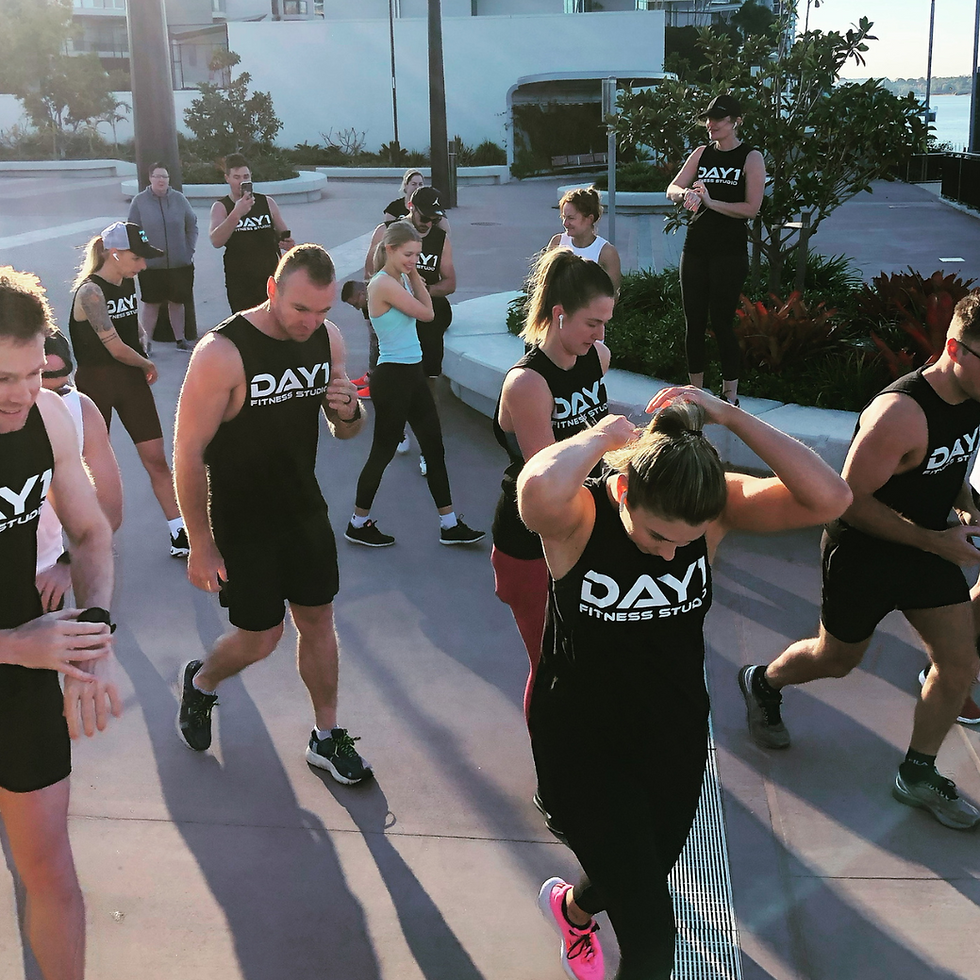Aerobic V Anaerobic System: Why do I train the way I do?
- Brandon @ Day1

- May 10, 2021
- 3 min read
In the following article, we take a dive a l little into the programming side of things. This may even answer some long held back questions like, WHY the hell do we do that exercise? Or why doesn't my trainer just get me to bludge on the treadmill for an hour!

The short answer, we have a training goal for you each and every session. We want you to try an burn 'x' amount of calories, we want you to work for a certain amount of time and in order for us to know where it is in your training journey you are, we refer back to the energy systems to ensure we're planning the appropriate sessions for your goals.
Firstly, let's simplify the two energy systems we've outlined so far:
Aerobic energy system versus Anaerobic energy system
Simply put.
Reliance on Oxygen for energy versus Reliance on the bodies ability to create energy
Our Aerobic system is as straight forward as it sounds, when we train for longer efforts we require the intake of oxygen through the lungs and of course in to blood stream. The key advantage of training within this energy system is that oxygen is easily obtainable (you simply take a breathe) so because it is so readily available it allows us to hold a steady state for an extended period of training time, generally speaking, 2 minutes or beyond.
Once in a desired slower, steadier state (think slower jog and constant heart rate) you're body will begin the process of metabolising glucose and fats for a fuel (energy) source with the aid of oxygen molecules. As your heart rate increases, your breathing volume will increase with it, meaning their is oxygenated blood carrying these energy 'cells' throughout our blood steam, to our muscles to suffice them with the task at hand. This system is slower system than the anaerobic system to break down fats, yet provides a longer energy source at a much lower rate on demand through your lower varied intensity output.
It's when we 'flick that switch' and push the body harder to when we really demand the quick energy response!
Our Anaerobic energy system is heavily reliant on the breakdown of glucose (sugars, carbohydrates) in the blood to gives us short amount of energy burst to allow our heart rate to work at a higher sustained beats per minute threshold, our muscles to continually produce maximal power output and our bodies ability to withstand the onset of lactic acid.
Unlike the Aerobic system, our Anaerobic system does not require the use of oxygen, the body can quickly metabolise glucose to give us an available energy to use at higher intensity. Generally for up to (approx) 2 minutes.

The advantage of training in this energy system is that we create a greater demand on the skeletal muscle system. We can produce more force, we complete more reps, we move a lot faster and more efficient which long term is vital for our longevity in relation bone health, joint health and muscle health.
So how do I know I'm training in the Anaerobic energy system?
Well I'm sure you've complete a 45 second set of squats and felt the lactic acid accumulation right? Well because we no longer have the reliance of oxygen to take the blood back to the heart, we are left with a bi-product called Pyruvate or more commonly known as lactic acid.
Upon the onset (DOMS), we wish to encourage new blood to the muscle group (stretching, massage, recovery) to pretty much flush the pyruvate away and replenish with a stronger muscle make up and a new found tolerance to lactic acid, otherwise know as our lactic threshold.
So in summary, training in the anaerobic system will benefit your strength goals, power goals, lactate threshold and build an aerobic base.
Your aerobic system will benefit you on your ability to breathe calmer for a longer period of time as your heart race increases, ie. training for a 10KM run.
At Day1, we go by the saying : You won't be able to run a marathon by doing squats 4 times a week just like you won't bench press 100KG by running 10KM every morning.
Train the right way to get better and what you want to better at.




Comments